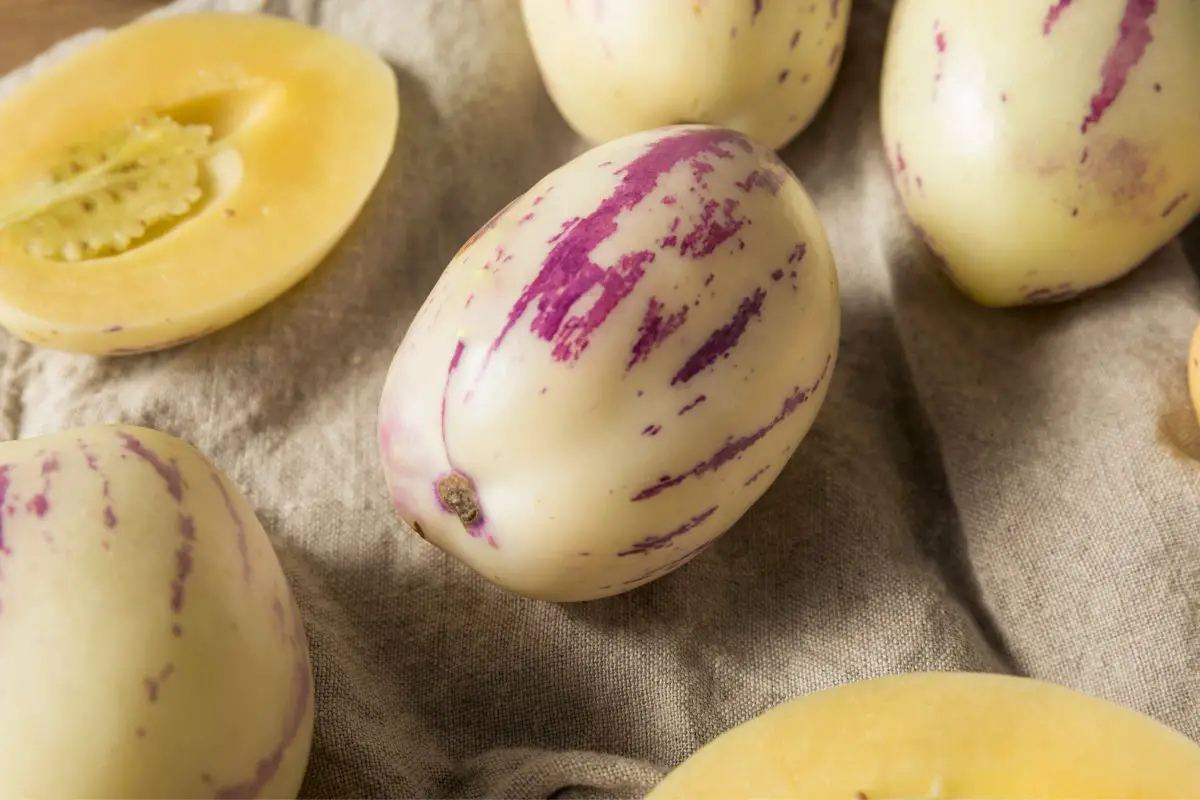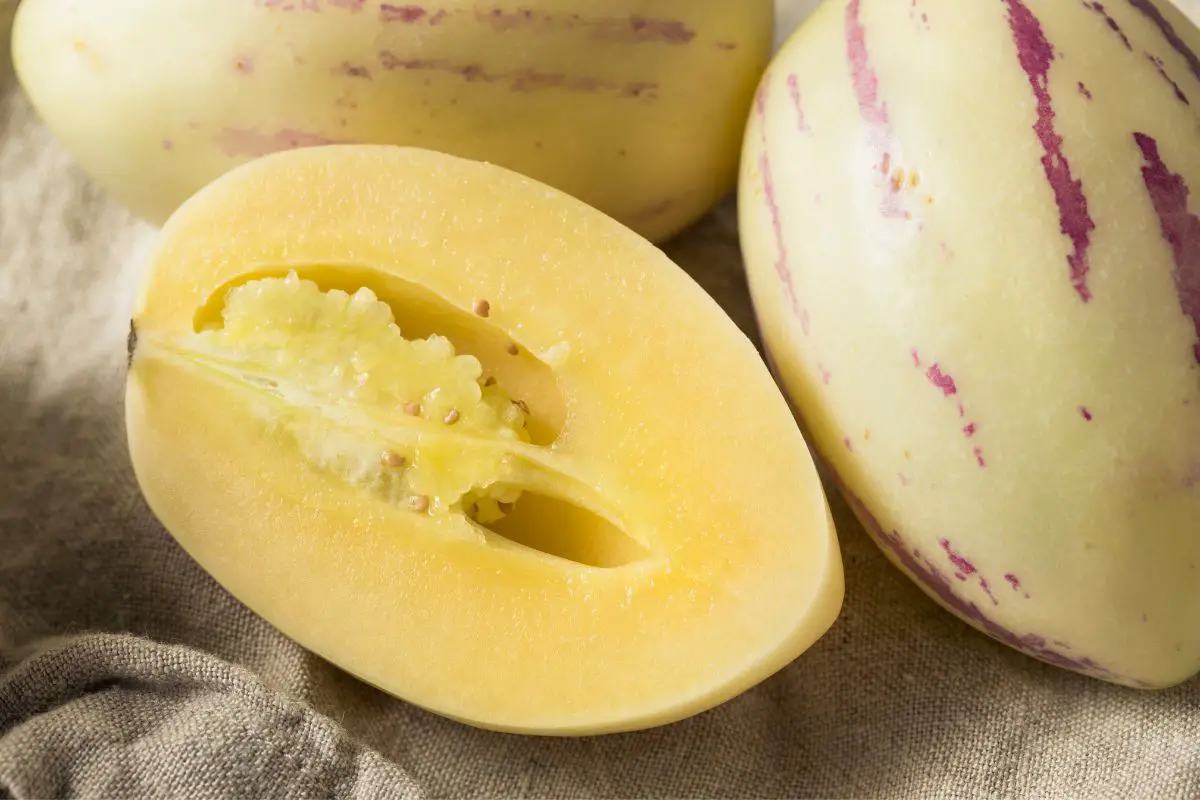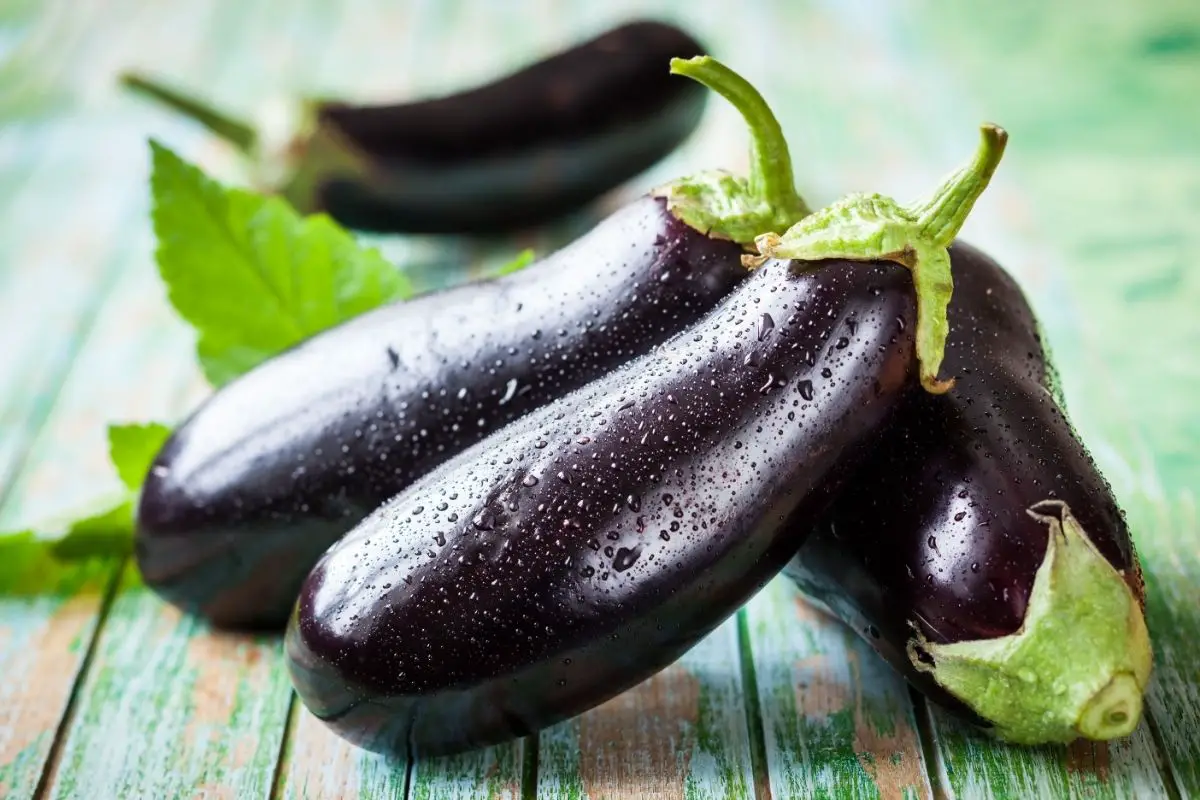Nightshades are a widely distributed and popular family of plants found all around the world. One such variety is the pepino melon, popular in certain regions, and used in its own distinctive ways.

But what exactly is a pepino melon, and what does it taste like?
What Is A Pepino Melon?
Despite being called a ‘melon’, the pepino is actually not a melon at all – actually belonging to the nightshade family, the same family of plants that includes the eggplant, potatoes, tomatoes, bell peppers, and chili peppers.
While not related to melons, pepinos got the name due to their appearance – which while different in color and shade, resembles the pattern of a cantaloupe melon.
What Other Names Does It Have?
There are other popular names that the pepino melon is called, and these depend on where in the world the plant is cultivated.
These names include: the tree melon, the bush melon, the melon pear, the mellow fruit, pepino dulce, pepino, the melon shrub, and pear mellon.
Where Are Pepino Melons Found?
Also known as the solanum muricatum, the pepino melon can be found all throughout Latin America, as well as the African continent, New Zealand, East Asia, Australia, and the Canary Islands – and as such is a widely utilized and cultivated plant throughout much of the world.
This makes the underrated nature of the pepino even more surprising, especially when you consider the wide distribution around the world, and the number of uses the plant has within cooking.
What Do Pepinos Taste Like?
Of course, the important question is the taste, and the pepino melon has very distinctive flavors that make it such a popular choice for many around the world.
Generally speaking, pepinos have a texture similar to that of a pear, and a flavor palette not too dissimilar from that of a cantaloupe melon – another reason why they have the name ‘melon’ despite being a nightshade.
What Do They Look Like?
As touched upon earlier, the pepino has a distinctive appearance that led to it being associated with the cantaloupe melon, but the full plant itself also has specific characteristics.
Plant
The pepino melon grows on a large shrub that can reach heights of 1 to 2 meters. It can grow in sunny or semi-shaded areas, and grow best in fertile, free draining, neutral soil.
The tree itself is semi-dense, unarmed, short-lived, and evergreen – meaning that they can continue to grow and flower throughout the year, depending on where they are kept and the environment you are in.
Fruit
The fruit itself has a base color of white, upon which purple-pink stripes adorn the surface, running vertically from top to bottom.
They can also be completely green, or completely purple, and variations are incredibly common throughout the world.
Generally speaking, a good quality harvest will produce sweet tasting fruit akin to a cantaloupe melon, whereas a poor harvest will bear ‘soapy’ tasting plants with a strange texture.
Flower
The plant also contains small flowers, usually colored blue, violet-purple, or white marked with purple, and these usually give flower between August and October.
Do Pepinos Have Health Benefits?
Throughout the world, pepinos are used mainly for cooking. However, they also have noted health benefits, which make them a popular ingredient in dietary and medicinal practices in some cultures.
Fighting Cancer
Pepinos are laden with antioxidants, making them a good tool in the fight against cancers. They are also rich in vitamins C and A, as well as beta-carotene – all of which are beneficial for slowing down cancerous cells.
Immune Boosting
They are also chock full of polyphenols, which are great for boosting and bolstering the immune system when incorporated into a regular diet.
Antioxidants are also present in the unripe and ripe fruit – although the ripe fruit has higher levels of flavonoids and phenols, which can have distinctive health benefits when consumed regularly.
Diabetes Management

Pepino melons also have anti inflammatory, anti-glycative, and antioxidative properties, meaning that they are great for slowing down the progression of diabetes, and helping sufferers to properly manage and maintain their glucose levels within their blood.
The plant is also considered good for managing kidney disease as well – afflictions that can be a result of diabetes in some cases.
Boosting Energy
Pepino melons contain compounds which help to break down the glucose in our bodies, converting the glucose into useful energy that can help us feel motivated, revitalized, and ready for anything.
Without this process of manifesting energy, the glucose will simply turn into fat in the body, which will then lead to weight gain and health problems if not corrected.
Reduces Cholesterol
The highly soluble fiber found in pepino melons also helps to reduce cholesterol in the body, through a process wherein the fiber binds itself to the bad cholesterol in the body, and helps to expel it through waste products.
Soluble fiber can also help to decrease the levels of low density lipoprotein cholesterol in the blood, while allowing the high density lipoproteins to work their magic.
Regulating Blood Pressure
Pepinos can also be good for helping to regulate blood pressure – something it does via the high amounts of potassium found in the plants.
Potassium can balance the negative components like salt, and in turn helps to regulate and normalize blood pressure. This can help to avoid more serious complications down the road – such as heart disease and strokes.
Promotes Liver Health
The fiber found in pepino melons helps to remove toxins from the liver, as well as boosting overall health.
A healthy liver means freedom from lethargy, weight gain, and weakness, and can be extremely useful in those with preexisting conditions wherein the liver may be affected.
Soothing Pain
The anti-inflammatory properties of pepino melons are also good for soothing aches and pains in the joints – something that can be beneficial for those with chronic conditions such as fibromyalgia, arthritis, and bone diseases.
Pepino melons are also good for strengthening bones, due to the large quantities of vitamin K, a substance that helps to bolster the bones and maintain their calcium levels – something that can otherwise naturally depreciate with age and illness.
Healthy Digestion
The fiber found in pepino melons is also beneficial for irregularity, digestive distress, and things like irritable bowel syndrome.
It is also beneficial for establishing good gut health – something that can work wonders on the rest of the body too.
Final Thoughts
And there you have it, everything you need to know about pepino melons, how they’re used, and what exactly they taste like.
It’s true that nightshades are a widely popular plant consumed throughout the world, and there are numerous different varieties that have different applications with cooking and cuisine.
However, you will do well to find one as iconic and delicious as the pepino – one that, while lesser known and underrated, has much to offer the world of world cuisine.
So if you are looking to expand your horizons with plants and vegetables, then why not give the pepino melon a try? Something tells me you won’t be disappointed!
What Does Pepino Melon Taste Like?
Course: Taste Like4
servings30
minutes40
minutes300
kcalIngredients
Pepino Melon
Directions
- Of course, the important question is the taste, and the pepino melon has very distinctive flavors that make it such a popular choice for many around the world.
- Generally speaking, pepinos have a texture similar to that of a pear, and a flavor palette not too dissimilar from that of a cantaloupe melon – another reason why they have the name ‘melon’ despite being a nightshade.
Recipe Video
https://youtu.be/oRfIOfMjQU8Video can’t be loaded because JavaScript is disabled: PEPINO MELON | Fruity Fruits Taste Test (https://youtu.be/oRfIOfMjQU8)- What Exactly Do Chickpeas Taste Like? Is There A Distinct Flavor? - September 30, 2023
- Top 11 Low Carb Options at Sonic Drive-In for Keto Diet - September 30, 2023
- What Should You Serve Alongside Potato Salad? 8 Incredible Side Dishes - September 30, 2023










